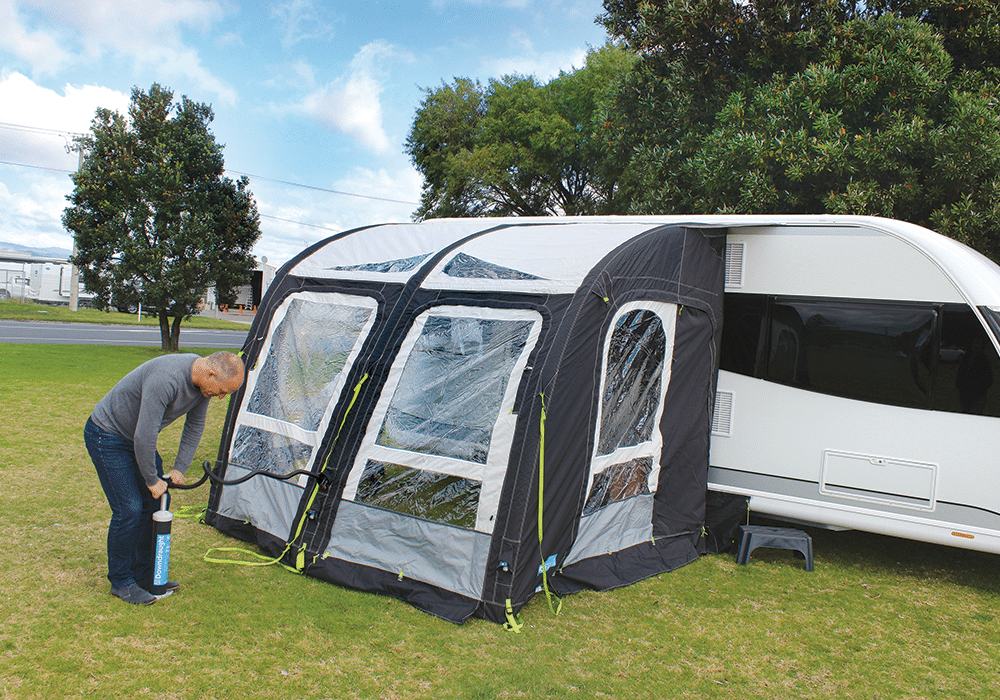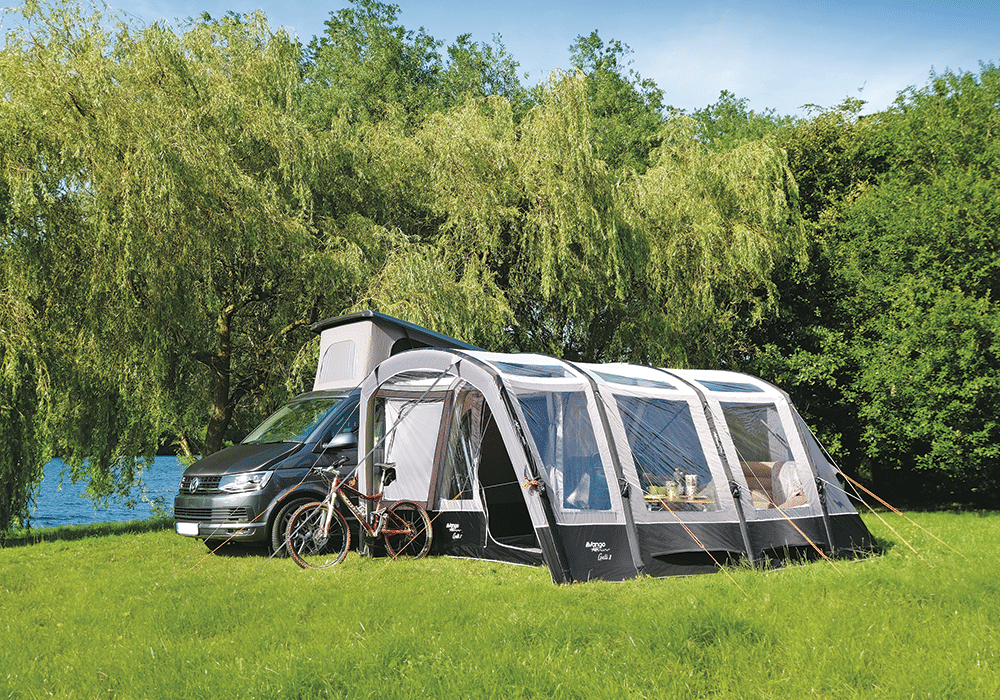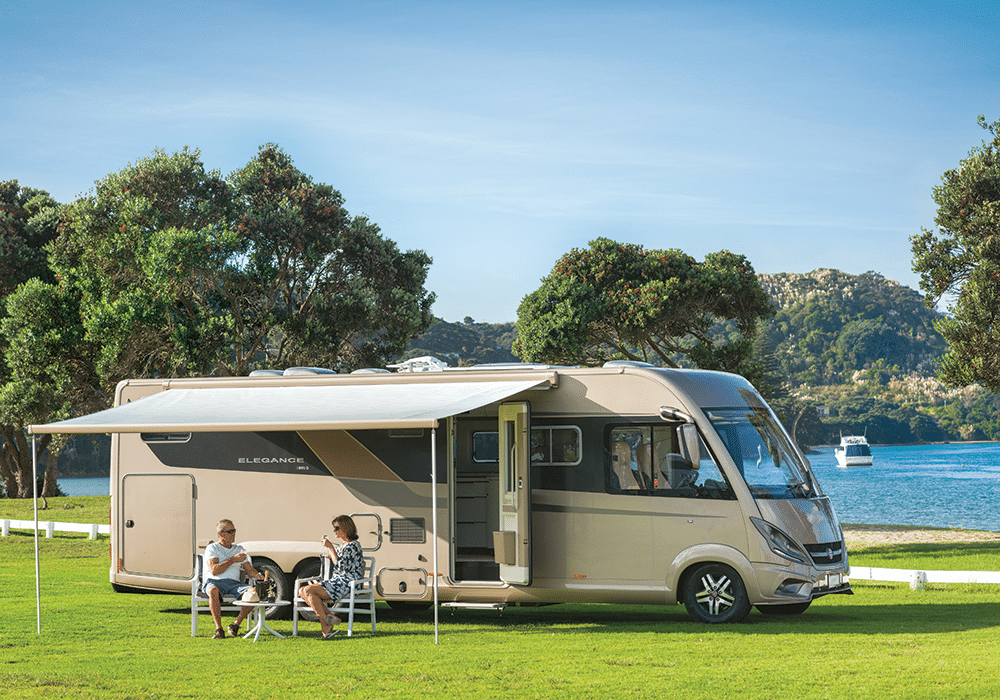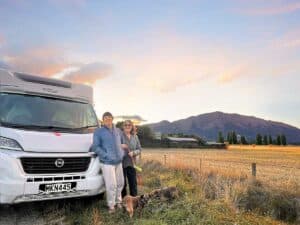A good awning is a must-have for Kiwi RV travellers. But with so many varieties to choose from, which is best for you? Claire Smith looks at some of the more popular options.
A good awning serves not only as weather protection, but also creates a defined outdoor living area or extra room, helping to extend that much-needed sense of space. From manual wall-mounted awnings to innovative inflatable options, these handy covers come in a wide variety of shapes and sizes.
If you’re planning to buy a new awning, consider first the size of your vehicle. It’s a good idea to opt for the maximum size that will fit the length of your motorhome, including over the entrance door.
It’s worth taking time to do a bit of research before choosing the best type of awning for you and your motorhome. Here’s an overview of the main options:
Wall-mounted cassette awning
This is the easiest awnings to use. Cassette awnings are available in a variety of lengths and are fixed to the side or roof of your motorhome. They’re sturdy, simple to operate, and are suitable for most types of motorhome. The canopy is housed within an aluminium case and uses a ‘roll out’ mechanism which is deployed either with an electric motor, or with a manual handle. Either method can be performed by one person quite easily.
For support, some awnings include a ‘straight arm’ function which holds the canopy open using horizontal arms that attach to the side of the motorhome, while others have fold-down legs and pegs.
Because they’re quick and easy to roll in and roll out, these types of awnings are good for those who enjoy short stays, and move regularly. They are fixed permanently to the side of your motorhome, so they don’t take up any internal storage space. It pays to note that fixed awnings can weigh up to 50kg, which is something to factor into your payload allowance.
Fixed awnings
Fixed awnings have a welded metal frame, finished with a durable fabric or alumininum-slat cover. It has a roof and three sides, and attaches to the side of the vehicle, so once set up, it stays put until you’re ready to pack down. This setup is particularly good for caravans and adds a lot of extra living space. Fixed awnings generally have a good connection between the vehicle and the awning itself, as well as zipped or roll down/up side curtains.

Freestanding or ‘drive away’ awnings
The obvious benefit of a freestanding awning is the ability to leave it on site (provided the site is secure, such as a campground), while you head out for the day. Freestanding awnings often include an extra flap of material that connects to the motorhome either by a fixed railing or cassette, straps that go over the motorhome, or magnets.
Fixed and freestanding awnings can be erected in a similar fashion to a tent, with poles and pegs. But if you fancy a faster and easier option for setting up, inflatable awnings are the way to go. They both weigh roughly the same, however you will need to include a pump — either electric or manual — for an inflatable version. You can read more about inflatable awnings here.

Tips for caring for your awning
- CLEANING: It’s a good idea to clean your awning every six months. Use water and a towel or a soft brush only. If the awning is very dirty, you may need to use a cleaning product suitable for the fabric type. Never use a water blaster or harsh chemicals.
- MOULD AND MILDEW: Prevention is the best cure of course, so always ensure your awning is completely dry before retracting or packing away. If you have to pack it away while wet, remember to open it as soon as it’s convenient, and make sure it is completedly dried off before repacking. If you do spot mould, you may like to use a mould removing spray, but do a spot test first to make sure it doesn’t contain harsh chemicals or bleach that might damage the awning.
- SAFETY: Roll-out awnings should be retracted overnight if the weather looks uncertain — many an awning has come off the worse for wear after being left up during unexpected rain or wind overnight. Storm straps and pegs are helpful, but if in doubt, don’t leave it out. And just as with tents, don’t ever use your BBQ inside a closed awning.
- INSPECT: Even with the best care and maintenance, awnings are subject to the rigors of wear and tear, so to avoid any major issues you should thoroughly check your awning twice yearly. Look for any mechanical issues such as resistance or odd noises. Inspect the arms, brackets, and stands for any signs of warping, and give the fabric a good check over for holes or signs of excessive wear.
Looking for motorhomes or caravans for sale in NZ? Browse our latest listings here.






